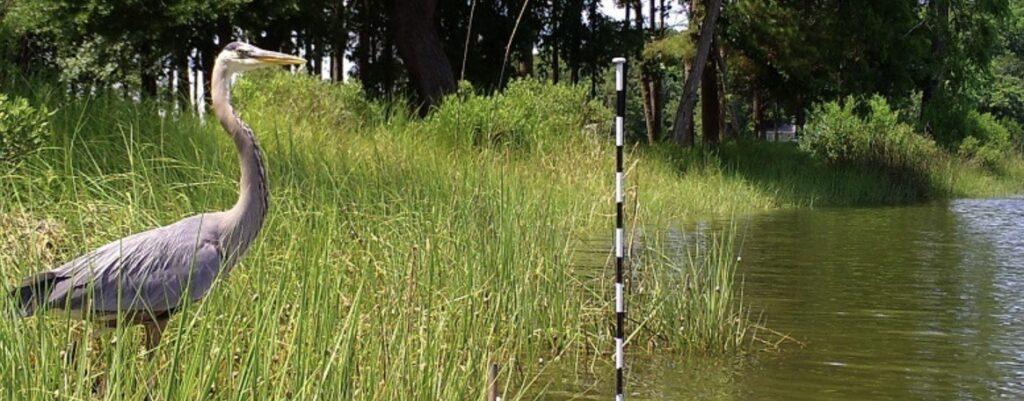VIMS Center for Coastal Resource Management – Virginia’s shorelines, marshes, beaches, and tidal mudflats provide critical habitat for many Bay plants, fish, crabs, birds, and other animals that are important for local communities and businesses and are critical for improving the health of the Chesapeake Bay. These natural areas are threatened by sea-level rise, development, and construction of shoreline defense structures. Armoring shorelines with bulkheads and rock walls impacts the Bay by decreasing water quality, destroying fish and wildlife habitat, and increasing erosion on neighboring shorelines. As people continue to build these structures to reduce erosion on their banks, we have lost hundreds of miles of natural shorelines and the benefits they provide. Living shorelines are a way for us to reverse those impacts on the Bay.
What are Living Shorelines? “Living shoreline treatments” are nature-based shoreline management practices that address erosion through the strategic placement of plants, stone, sand fill, and other structural and organic materials, intended to mimic a natural shoreline in looks and benefits. These methods can be used alone or in combination.

Non-Structural Options. • Shoreline Vegetation Management • Beach Nourishment and Dune Restoration • Tidal Marsh Enhancement • Tidal Marsh Creation • Bank Grading • Fiber Logs Structural Options • Marsh Toe Revetment • Marsh Sill • Offshore Breakwater System • Oyster Reef
Why Living Shorelines? • Living shoreline projects can be installed on tidal shorelines as well as freshwater ponds and lakes wherever erosion is a problem. • Virginia and other coastal states now have policies that living shorelines are the preferred way to address erosion. • Less shoreline armoring is necessary for the future health and productivity of our estuaries.
Benefits of Living Shorelines
• Reducing bank erosion and property loss for you and your neighbors • Providing an attractive natural appearance • Opportunities for funding assistance through low-interest loans, cost-sharing grants, and other programs • Streamlined permitting process for some projects with a general permit • Improving water quality and clarity for safer fishing and swimming • Improving marine habitat and nursery areas to support seafood industry.
Will a Living Shoreline Work for You? Non-structural living shorelines, like planting and changing slopes, are best for sheltered areas with low-energy waves. If your shoreline has (or had) marsh or beach and low banks, this option may work for you. If your property is on a creek or river with large waves or boat wakes, or if your high bank is eroding, then structural options like low-profile oyster reefs, rock sills and breakwaters can be used to protect planted marshes or new sand beaches.
Will a Living Shoreline Work for You? Non-structural living shorelines, like planting and changing slopes, are best for sheltered areas with low-energy waves. If your shoreline has (or had) marsh or beach and low banks, this option may work for you. If your property is on a creek or river with large waves or boat wakes, or if your high bank is eroding, then structural options like low-profile oyster reefs, rock sills and breakwaters can be used to protect planted marshes or new sand beaches. Nature-based approaches are not suitable for some situations.
An easy-to-use S h o r e l i n e Decision Support Tool can help you choose an effective erosion control practice: just answer a series of questions about your shoreline conditions to get a recommendation.




Please tell me you are not considering Angelo Manuel.
FRANK WENDELL FOR MAYOR!!!
Loved this. Thank you.
As it is being used by all of the political parties here and globally to keep the populace divided to…
The old saying rings true, “ junk in — junk out “